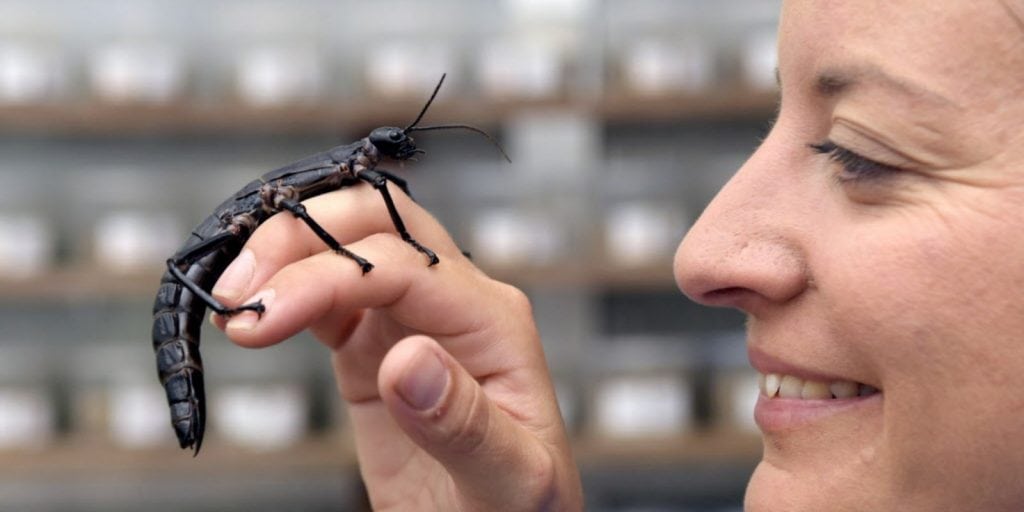Their fall occurred after black rats infested their remote volcanic habitat in 1918 and devoured them. Twelve other invertebrate species and five bird species were also exterminated due to the rats.
With the absence of rats on Ball’s Pyramid, the tiny population living there is as safe as it can be, especially since access to the island is severely restricted. Back on Lord Howe Island, people are working on eradicating the rogue rodents, so the Lord Howe Island stick insect can be reintroduced and once again reign over its historic domain after almost a century of exile.

On Ball’s Pyramid, adult Lord Howe Island stick insects spend the night nibbling on leaf tips of the melaleuca bush, and then retreat out of sight by day.
Adult insects huddle together as they shelter from predators during the day, with dozens of animals found in one tree hollow or hide. This species is capable of reproducing asexually by parthenogenesis, where unfertilized eggs hatch into females, a common reproductive strategy among phasmids (stick insects). On Ball’s Pyramid, the 2007 surveys of the wild population showed that the population was skewed more toward females than males.
















1 thought on “”
this is bad atricle y rattuioie eat the amogus bird? u make my teacher sad he is crying over the dea bord what do u have to say for yorudlf.